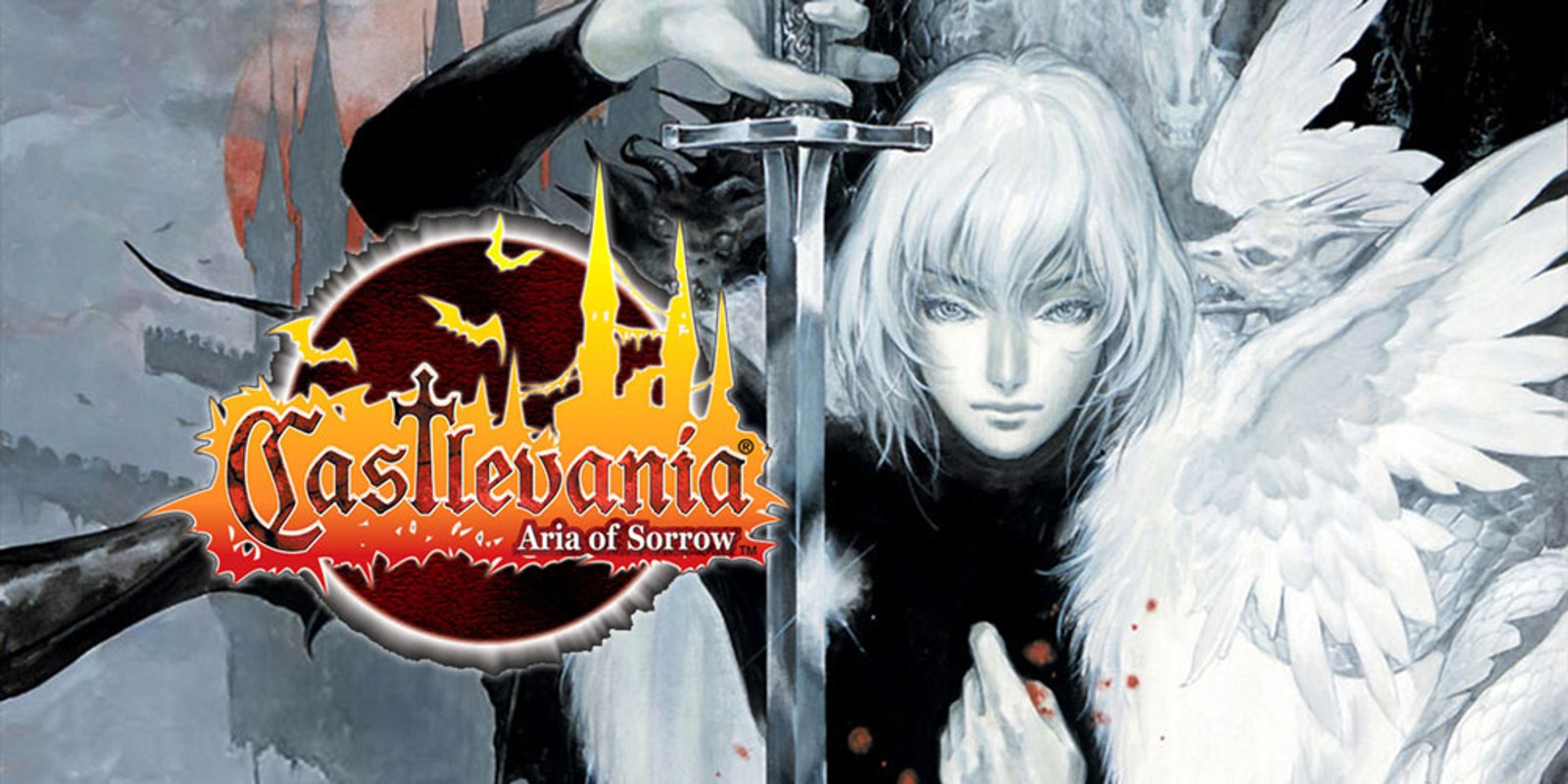2 min to read
Castlevania: Aria of Sorrow
Unearth the Secrets of Dracula's Castle in the Gripping GBA Adventure – Castlevania: Aria of Sorrow.

The following is the official GBA Europe retail version of the game.
About the game
In the unforgiving realm of handheld gaming, Castlevania: Aria of Sorrow rises as a seminal entry that transcends the limitations of its platform. Released for the Game Boy Advance, this installment in the long-standing Castlevania franchise stands as a testament to the enduring appeal of the series. Developed by Konami, Aria of Sorrow, released in 2003, masterfully blends atmospheric storytelling, engaging gameplay mechanics, and technical prowess to deliver an unforgettable experience.
The narrative unfolds within the shadow-laden walls of Dracula’s Castle, a place veiled in malevolence and steeped in centuries of supernatural history. Players assume the role of Soma Cruz, a seemingly ordinary young man caught in a peculiar solar eclipse that whisks him away to the foreboding fortress. As Soma, players navigate the treacherous corridors, confront ghastly creatures, and unearth the secrets buried within the castle’s ancient stones.
One of the defining features of Aria of Sorrow is the introduction of the “Tactical Soul” system, a groundbreaking gameplay mechanic that allows players to collect and utilize the abilities of defeated enemies. This innovation injects a strategic layer into the traditional action-oriented gameplay, empowering players with a diverse arsenal of supernatural powers. From fireball-hurling adversaries to spectral familiars, the Tactical Soul system adds depth and customization, enabling players to tailor their combat style to their preferences.
Graphically, Aria of Sorrow showcases the Game Boy Advance’s capabilities to the fullest. The dark, gothic aesthetic of Dracula’s Castle is rendered with meticulous detail, creating an immersive atmosphere that resonates with the series’ iconic art style. The character sprites are expressive, and the enemy designs, ranging from grotesque to otherworldly, contribute to the eerie ambiance of the game. The visual prowess of Aria of Sorrow is complemented by a hauntingly beautiful soundtrack, composed by Michiru Yamane. The melodic tunes and ambient sounds enhance the sense of foreboding, enriching the overall experience.
The journey through Dracula’s Castle is not merely a linear progression; it’s a labyrinthine exploration filled with secrets and alternative paths. Aria of Sorrow rewards players for thorough exploration, unveiling hidden chambers, powerful artifacts, and additional challenges for those willing to delve deeper into the castle’s mysteries. This non-linear approach encourages players to revisit areas with newfound abilities, ensuring a sense of discovery throughout the game.
As Soma delves deeper into the heart of darkness, he encounters a diverse cast of characters, each with their own motivations and connections to the castle’s enigmatic history. From enigmatic allies to formidable adversaries, the character interactions add layers to the narrative, infusing the game with a sense of depth rarely seen in handheld titles.
Castlevania: Aria of Sorrow stands as a triumph of design, storytelling, and technical achievement on the Game Boy Advance. Its legacy extends beyond the handheld realm, leaving an indelible mark on the Castlevania series and the broader landscape of action-adventure gaming. With its innovative gameplay mechanics, atmospheric presentation, and compelling narrative, Aria of Sorrow remains a shining example of the timeless appeal of the Castlevania franchise, inviting players to brave the darkness and uncover the secrets that lie within the heart of Dracula’s Castle.
Resources
- Official page of the game; Cover image credits: https://www.nintendo.co.uk/Game/Game-Boy-Advance/Castlevania-Aria-of-Sorrow-975872.html